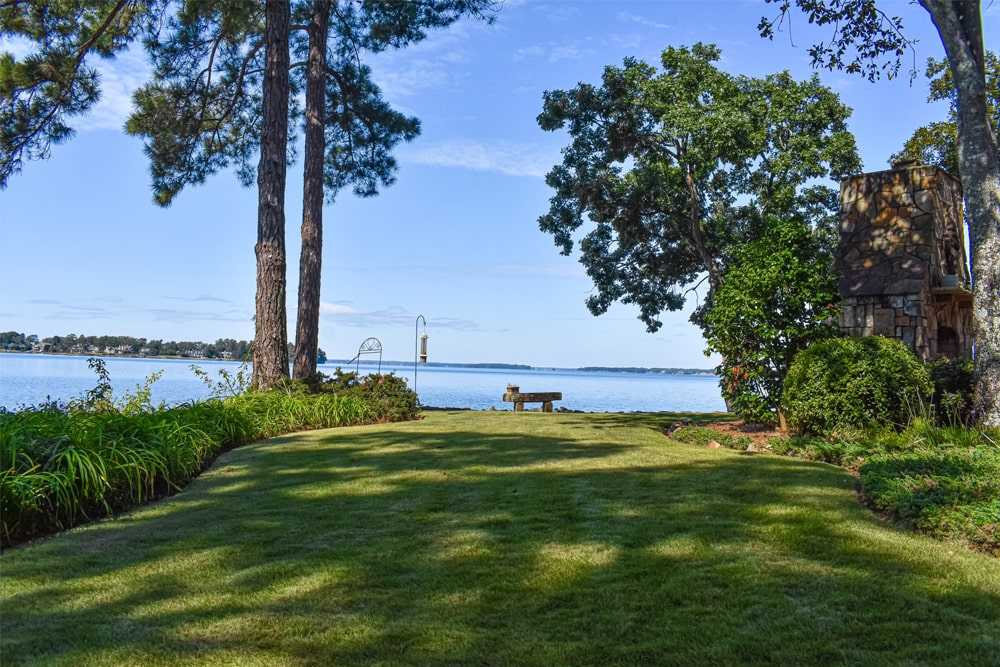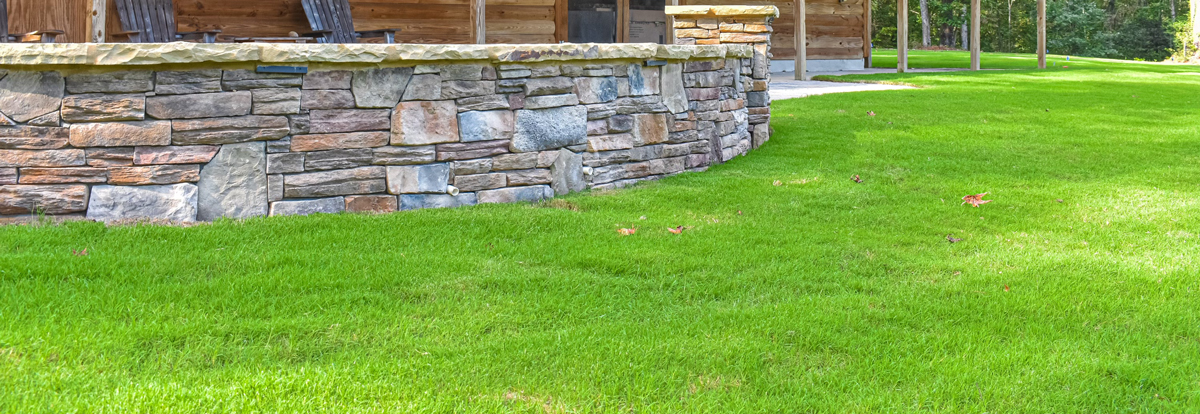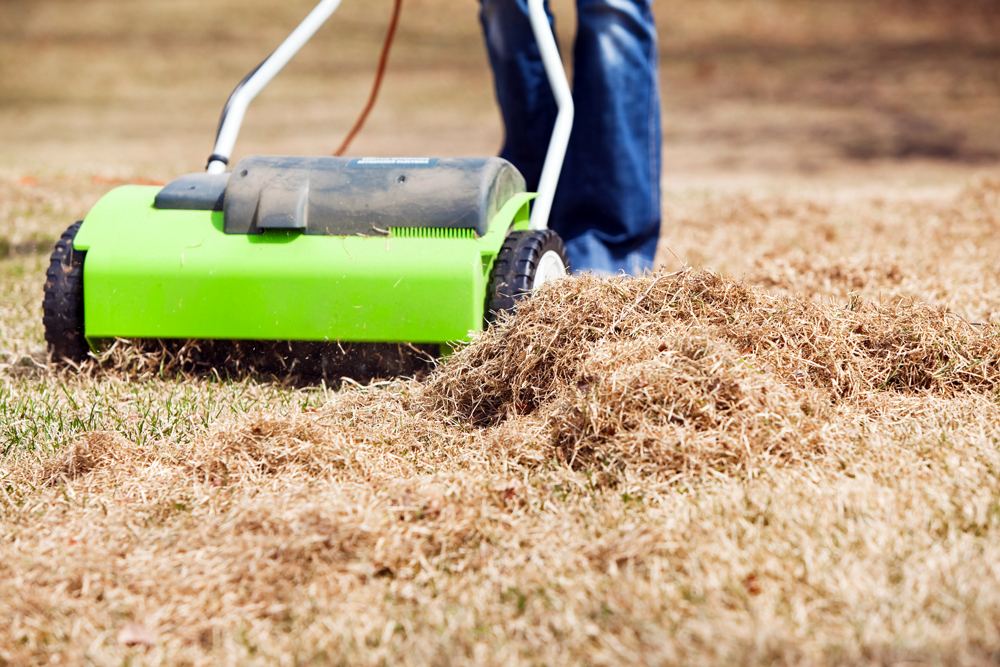Choosing and Caring for Grass in Hot Climates
Here in South Carolina, our grass lives a tough life, suffering through our scorching summer season. Certain types of grass are better equipped to handle the challenge – but no matter what sort of turf you choose, there are some essential tips which will help you maintain a lush yard all year-round.
This article will examine the best grasses for hot climates, look at how the right lawn service can help grasses stay healthy even in summer heat, and address other considerations including foot traffic and shade conditions.
How Hot Weather Challenges Your Grass
Hot summers expose your grass to a one-two punch. First, the sun’s intense UV rays can literally scorch fragile leaves. This is most evident in shade-tolerant grass varietals, which quickly burn and wilt in the noon sun.
Second, high temperatures cause water to evaporate quickly, potentially making it difficult for your grass to stay hydrated. Certain types of grasses are more drought tolerant than others, and there are also tools like automated sensor-based irrigation systems which can give homeowners a significant degree of control over their lawn’s moisture levels.

Key Characteristics of Heat-Tolerant Grasses
Heat tolerant grasses, sometimes called warm-season grasses, have been selected and bred for hardy traits that help them stand up to the heat. Cool-season grasses, on the other hand, tend to prefer shadier, cooler, and wetter conditions.
Deep Root Systems
Grasses suitable for hot climates generally have deep root systems that allow them to access water from deeper soil layers. This helps them withstand periods of drought more effectively.
Drought Resistance
The ability to go without water for an extended period is another essential characteristic of heat-tolerant grasses. Their physiology is adapted to conserve water, often through specialized leaf structures or waxy coatings.
This is a real boon for people who live in areas that are prone to drought and outdoor watering bans as these grasses need less assistance to survive through tough summer months.
Texture and Color Retention
Heat-tolerant grasses maintain their texture and color better during the dog days of summer than their cold-climate counterparts. They are less likely to brown or wilt under stress, and maintain their dark green hue even when the heat is on.
Note: While many warm-season grasses are not in-fact sensitive to cold, they do typically go dormant in the winter. For a year-round green lawn, consider overseeding your Zoysia, Bermudagrass, or Bahiagrass lawn with Kentucky Bluegrass or ryegrass.

Top Grass Types for Hot Weather
Top Grass Types for Hot Weather:
Bermuda Grass
Bermuda Grass is a top choice for hot climates due to its exceptional heat tolerance and drought resistance. It also stands up well to foot traffic, making it ideal for sports fields and high-traffic areas.
In cold conditions Bermuda grass will go brown – as is common for warm-season grasses – but it tends to this earlier than some of its other warm-season peers.
Zoysia Grass
Zoysia is another excellent option, offering a fine texture and a lush green color. It requires less frequent mowing than Bermuda Grass and is also quite drought-tolerant. Like Bermuda grass, Zoysia will happily soak up foot traffic without complaint.
This grass is particularly cold-tolerant and makes for great lawns in areas with four seasons.
St. Augustine Grass
St. Augustine Grass is well-suited for coastal areas with hot, humid climates. It is less tolerant of drought but thrives in full sun and offers a thick, carpet-like coverage.
Buffalo Grass
Buffalo Grass is native to North America and is well-adapted to hot, arid conditions. It has a fine texture and requires very little water or maintenance.
Centipede Grass
Centipede Grass is low-maintenance grass which loves acidic soils and offers moderate drought resistance. Its slow growth rate means less frequent mowing, but it is less tolerant to foot traffic compared to Bermuda or Zoysia.
Note: Centipede grass does not like the cold! This grass does not go into a true state of dormancy in winter conditions and may begin to show negative effects when the weather stays below 55 degrees Fahrenheit for an extended period.
Factors in Choosing Grass for Hot Climates
Soil Type
Different grasses have different soil preferences. Matching your lawn’s grass type to your local soil type will make it easier to have a healthy lawn! Not sure what type of soil you have? Check out our article on Understanding Soil Types to learn how to find out!
Foot Traffic
Some grasses hold up better under frequent use, making them more suitable for high traffic areas like playgrounds and athletic fields. Zoysia and Bermuda are both well suited for intense activity, while Centipede prefers lighter traffic.
Water Availability
Consider your local water supply and restrictions. Drought-resistant species are more suitable in areas where water is scarce or if you live in an area with regular watering bans.
Shade vs. Full Sun
Some grasses, like St. Augustine, can tolerate partial shade, while others, like Bermuda Grass, require full sun. Keep in mind that very few grasses will thrive in hard shade.
Tips for Maintaining a Healthy Lawn in Hot Weather
Watering Practices
Knowing when and how much water to apply is crucial for lawn health. For more details, read our previous blog detailing how much water your lawn needs.
Don’t have time to check that out right now? Well, in brief: water your lawn when you see that your grass has lost its luster and springiness. The best time of day to water is before 10 am, and warm weather grasses generally do best with fewer, but longer watering sessions.
Mowing and Height Recommendations
Different grass types have different mowing needs. Keep the blades sharp and never remove more than one-third of the grass height at a time. Be sure to know what length is ideal for your particular grass.
Keep in mind that certain grasses may have different length requirements at different times of the growing season. For example, here in South Carolina, Centipede Grass should start the year at ~1” in height, be allowed to grow out to 1 to 2” during the late spring and summer, and kept at 2” prior to the cold winter months.
Local lawn care specialists or agricultural extension agencies will be able to help you determine how to best care for your grass as the specifics will vary based on your climate.
Fertilization, Soil Health, and Dethatching
Healthy soil contributes to a resilient lawn. Use a balanced fertilizer that offers essential nutrients without encouraging excessive growth, which can lead to issues like thatch buildup.
On the subject of thatch buildup – certain types of turfgrasses will need regular dethatching regardless of your fertilization schedule. Thatch is a layer of organic material composed of dead grass, roots, and other debris that can build up between the vegetation and the soil surface. While a thin layer of thatch is beneficial, as it acts like mulch and helps retain moisture, too thick a layer can begin to cause problems.

Warm Weather Grass Lets You Enjoy A Lush Lawn All Year Long
To have your home’s lawn look like a golf course even during the heat of the summer, you need to carefully select your grass! Take into consideration your local conditions like heat, sun exposure, ability to water during drought, and soil makeup. Zoysia and Bermuda Grass are perennial favorites (pun intended), but other warm weather specialists, like Centipede and St. Augustine, offer their own advantages and can handle the heat.
Your best bet for keeping your landscaping looking great all year long is to find a local, professional lawn care company. Look for experts who can provide you with a plan custom tailored to your lawns specific needs!

Read More of Our Blogs
